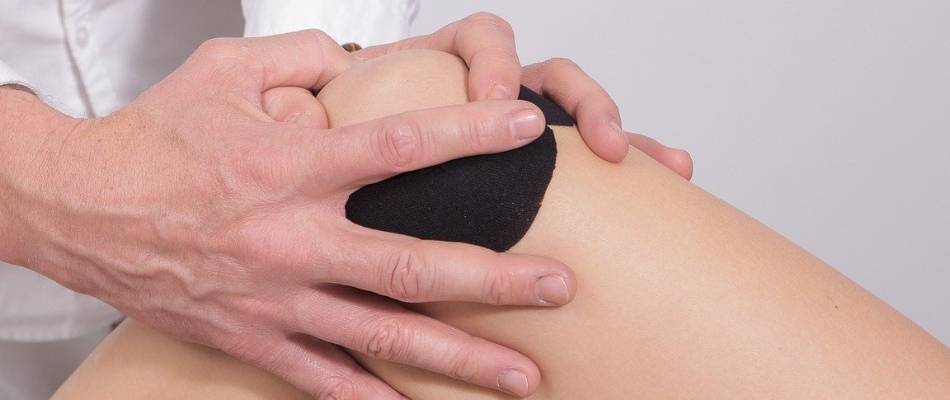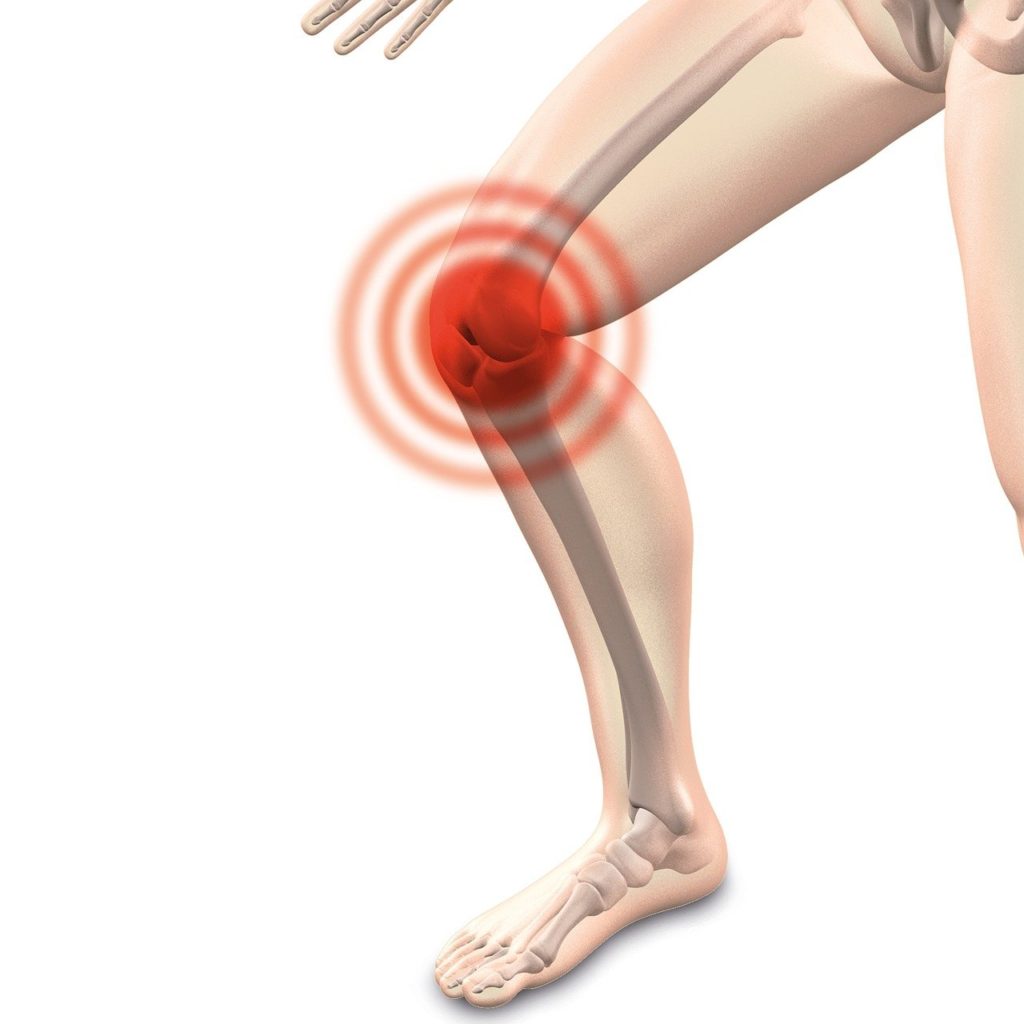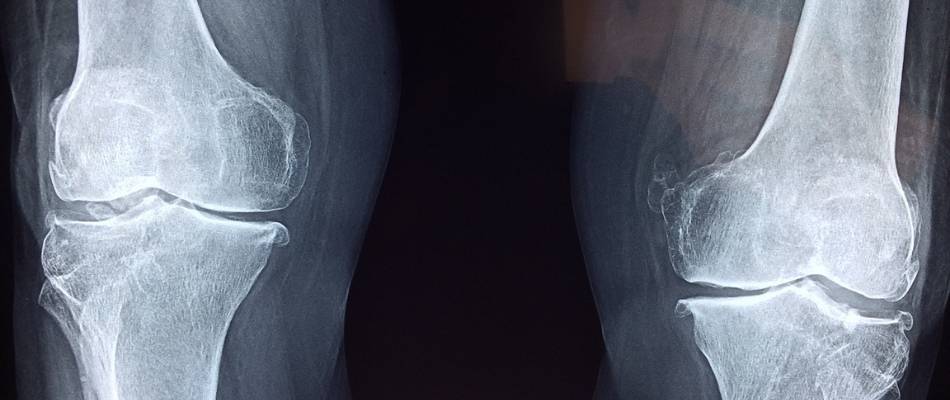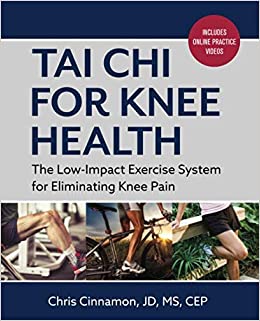The way that tai chi stretches and warms up the body has huge advantages over many types of western stretching. And I am happy to see that it is gaining in popularity because people are experiencing not only reductions in pain or discomfort but increases in strength and stability. In articles that we shared detailing how tai chi stretching is different and what a good warm up routine is, questions have come in specifically about how to do tai chi knee exercises to reduce stiffness and improve conditions like knee osteoarthritis.
When performed correctly, tai chi knee exercises reduce stiffness and pain and improve conditions like knee osteoarthritis by warming the knee and using circular motions to release synovial fluid rather than employing a lock and stretch method which targets adjoining muscles.
The problem is that while some people are getting the benefits of using tai chi to reduce knee pain, others are doing tai chi and making their knee pain worse. In working with my students and researching what is available online, it’s clear that many of the stretches that are suggested are being performed incorrectly. Secondly, there are three alignment mistakes that new tai chi students are making that puts extra pressure on their knees.
That’s what we are going to do here. We are going to clean up the warm-up mistakes so that you have a tool to reduce stiffness and pain in and out of the classroom. Then we are also going to specifically highlight how to perform tai chi so that your legs feel warm, stretched, and healthy by the end, not strained.

Tai Chi and Knee Pain
Tai chi has a unique relationship with knee pain. Researching online and listening to students it is clear that some people are practicing tai chi to improve how their knees feel or reduce the effects of debilitating conditions like osteoarthritis. On the other hand, some people are reporting that their knees hurt from practicing tai chi. Questions look like this:
Can tai chi hurt your knees? Yes
Can you do tai chi for knee pain? Yes
How can the answer to both of these questions be YES? If a person is doing tai chi knee exercises like circling the knees out past the toes. they will be moving the joint in an incorrect way. Secondly, if they perform the tai chi form incorrectly, they put extra strain on the patella (the small bone located in the front of the knee) or put weight on the knee when it is at an odd angle.
Both of these are easy to fix with tai chi knee exercises designed for stretching and performing the moves correctly. Let’s start with the stretches to give you some immediate relief.
Tai Chi Knee Exercises to Reduce Pain and Instability
Most people will tell you that joint pain and stiffness is worst in the morning and improves throughout the day. There is fatigue after a long day and definitely acute pain when a joint is hyper-flexed or pressure is put on it like kneeling, but getting up and moving seems to help.
I think this is very telling and points to our solution for reducing knee pain: motion and use. The relief from pain and stiffness that motion creates is caused by two things. There is a warming of the joints and surrounding muscles and a release of lubricating fluid (synovial fluid) within the joint. Knowing this, we can target warm-up activities that mimic “activity” and get us feeling better faster.
Rotational Tai Chi Knee Exercises
The standard tai chi knee exercise is a slight squatting motion while you circle the knees. Let’s take a look at how to do it incorrectly. Here at 17 seconds, this instructor correctly asserts that what she is doing is wrong.
However, that’s not a tai chi knee rotation. I don’t disagree with her entirely and I will share some good suggestions she has in a minute but notice how the knee is forced to the outside and in front of the toe with this method. Secondly, at the worst extreme she is at the lowest extreme. Meaning, that all of her body weight is pressing down at the worst possible time. Not good.
Yet, I am still saying that using the larger muscles of the leg is needed to warm up the region and increase blood flow. And secondly, that a rotation of the joint is needed to release synovial fluid. But how?
Single-Leg Rotational Tai Chi Knee Exercises
Here is a better example starting with a single leg. Things to note:
- It is being powered by the leg muscle
- No weight is on the leg
- The knee is aligned and behind the toe
- The ankle and the leg is so relaxed that the ankle looks floppy
The single leg exercise is great because you can do it holding on to a counter top or door knob if needed. If you are looking for tai chi knee exercises on YouTube, I suggest you search in Chinese: 太极膝旋转
Double-Leg Rotational Tai Chi Knee Exercises
Now on to the double-leg exercise that was addressed in the first video. Here is an example done correctly:
What I want you to notice is that:
- It is more like sitting, your butt goes back and down towards an invisible stool
- Your thighs and calves act as pumps. If you are doing this correctly those muscles will feel fatigue after 6-9 rotations
- Concentrate on pumping the legs up and down, not on rotating the knees
- The knees stay behind the toes meaning the butt has to go way back
- The hands stabilize the knees
- The lower back is kept soft by flexing the stomach muscles
- Stay upright, do not bend over
- Let your body tell you how low to go. This instructor is going pretty low with her thighs almost parallel to the ground. You don’t have to go that low and can still get the benefits.
I love this exercise and we do it every class for EVERONE. It is the fastest, safest way to warm-up the knee, strengthen the legs, and get the wobbles out.
Warming Tai Chi Knee Exercises
There are times you knee is tight and in pain so it makes standing and getting up really difficult. This happens a lot with osteoarthritis for example when someone has had to kneel to tie a shoe or pick something up. In these cases, we can still bring relief to the area with kind of a forceful massage.
I had no intention of fully criticizing the first instructor and want to circle back to some really useful suggestions she also included in her video. If you are at a point where you cannot do the single or double leg rotation, rapid and strong massage along the knee can bring blood and warmth to the area to get you moving. Don’t be shy with it. Think rug burn! Here she is again:
Please not that I specifically avoided the word “stretches” and opted for “warm-up” and “exercises.” For most westerners (me included) stretching equates to locking a joint and pulling the muscles across the joint. This doesn’t help in this situation. You are not lubricating the joint and are not warming up the muscle. It can also have the unintended effects of 1) pulling on a cold muscle and 2) stretching only one side of limb which can lead to more wobbliness.
I go into great detain discussing Tai Chi Stretching vs. Western Stretching here put just know that doing things like a hurdlers stretch or stretching your calf by pushing your toe on a curb will only bring you temporary relief.
Doing the Tai Chi Form So That it Strengthens Your Knees

The great news is that tai chi knee exercises are baked right into the form. Not only can you do tai chi with bad knees but it but you can reduce and strengthen your knees simply by practicing. This is where the conflicting information comes in. Some people’s knee health is improving from doing tai chi and some people experience knee pain after tai chi. Here’s why:
Can Tai Chi Hurt Your Knees?
Tai chi can hurt your knees if performed incorrectly in four ways:
- Your knee extends out past your toe.
- You turn on a leg that has your weight on it.
- Your knee is not aligned with your toe and points to the inside or outside.
- You step by landing with all of your weight on that foot versus stepping with an empty step (like you are testing out thin ice) and then transferring your weight onto it.
And, if you are overweight there is benefit to doing tai chi but you may need to modify it to start.
Here’s a great close up demonstration someone did. Pay attention to these following points:
- It is purposefully slow (intentional).
- The step occurs first and only then the weight is transferred on to it.
- To turn, he pulls all his weight back into the standing leg, rotates the toe and then puts the weight back onto it before moving forward.
- The knee is always in line with the toe.
- Lastly, his hands are doing nothing! if you can’t walk like this, stop practicing the form and just get your walking and weight shifts down. You are not being a wimp. Nearly ever workshop I have attended under a Chinese instructor and every morning when I trained in China was spent tai chi walking for a bit.
Tai Chi for Knee Osteoarthritis
You can you do tai chi with bad knees but conditions like osteoarthritis need special consideration. Osteoarthritis is a degenerative condition where over time parts of the joint can wear down or wear away completely. The suggestions above assume a typical knee anatomy. With osteoarthritis of the knee, the joint can actually change shape over time. So it makes sense that tai chi knee arthritis suggestions have some different considerations.
But we don’t want to throw tai chi out if you have knee arthritis because it is designed to help. Osteoarthritis usually causes pain, stiffness, and swelling. These are all things that tai chi helps to reduce.
Exercise is considered the most effective, non-drug treatment for reducing pain and improving movement in patients with osteoarthritis.
Arthritis.org
Suggestions for Doing Tai Chi for Knee Osteoarthritis
If you have osteoarthritis, you job is to modify the form, slowly building up stamina to do it for longer intervals. Here’s how to modify your form:
- Stand tall! Yes your instructor might look like she is sitting in an invisible chair. You however need to stay almost upright.
- Narrow Your Stance. Keep your feet shoulder width throughout the form. Here is how to correctly improve your tai chi stances.
- Reduce Your Time. Work for less and take a break.
- Slow it Down. Tai chi is more enjoyable and better for you at a super slow pace.
- Do Tai Chi Sitting. Do the form as long as your knees are comfortable, then sit in a chair and continue using the upper body.
The first two suggestions do not need to be modified after you heal or feel better. There is no shame in doing the form in a high stance. In fact, it is expected that your stance get higher and higher as you get older and older. Sitting in a chair is also common in our class. We have members do the form, then go and sit and continue watching and moving from a chair.
Let’s end with this really great example of tai chi and qigong being performed in parks in China. All of these people are doing a ton of different exercises but notice how everyone over 50-60ish is completely upright.
Tai Chi for Knee Health
If you are looking for more information regarding using tai chi for knee heath there is actually one book available to us. Chris Cinnamon, a tai chi instructor from Chicago did a deep dive on this topic, What’s really important here is that he has has a master’s degree in kinesiology and he teaches tai chi. These passions come together quite well in this book. It is very valuable for anyone with chronic knee pain and a really important read for tai chi instructors working with anyone over 60.
Other than knee pain, tai chi is modifiable for a whole host of other injuries and illnesses.



